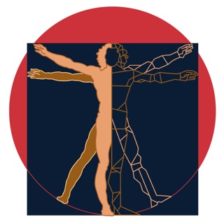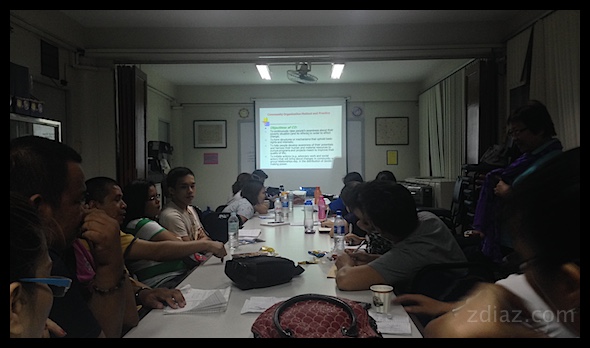Days 3 was spent discussing Social work method and practice. Our speaker was Ms. Miriam Estrada, head of the Social work department of the Saint Theresa’s college Cebu. According to her, in the Philippines we use the Generalist/integrated method of social work practice. Among other things it is characterized by the use of one or any client system as entry point for working with another or other client system. I’ve heard about the terms “case work”, “group work” and community work before and I had a faint idea on what it really means although the english terms might reveal some ideas on what it is about. These terms refer to the work done with corresponding client systems. Work on individuals is referred to as “case work” etc. Social workers work with Individuals, families/groups and communities, and these are referred to client systems which social workers may use as entry points to achieve the goals of social work. The Generalist/Integrated method also provides a holistic problem solving method in that it views every client as a part of a social system which affect the client’s situation. The Generalist/Integrated method recognizes that the social worker cannot be of real help if other client systems are ignored.
Day 4 was the most interesting as this provided the heart of the discussion of this certificate course. The topic for this day was community organization (C.O) methods and practice. First we discussed definition of terms, elements of C.O, historical developments of C.O, Goals and objectives of C.O, values and guiding principles of C.O and knowledge in C.O.
On day 5, Ms. Rose Sequitin of U.S.P was our speaker again. She discussed “Problem identification and techniques” a topic that is of so much use to social workers. Seven tools were given on how to identify and help solve problems, these are:
1.) Community map – Helps give the community a visual representation of problems;
2.) Social diagram and Venn Diagram – Helps the community visualize where to tap resources;
3.) Problem tree analysis and fish bone analysis – Both helpful for analyzing cause and effect of problems;
4.) SWOT analysis – Strength, Weakness, Opportunities, Threats – Helpful in assessing the overall health of the organization/Community;
5.) Cartesian graph – Helpful in determining what the organization/community wants and does not want relative to its resources.
Listening to the discussion, I realize that social work taps other disciplines to solve the myriad problems that the profession is constantly facing. I am familiar with most of these tools as most of these were taught during my industrial engineering years and in management books.
Afterwards we were divided into 7 groups to report on each of the tool and provide an example on how to use them. We were tasked to do problem tree analysis. I just contributed inputs while my classmates reported.
After the lecture and activities we voted the officers of our batch. I was nominated to become president (I always get nominated in groups and I really don’t like it much because I have always assumed leadership roles and there are times that I just want to sit down and become an ordinary follower) I declined the nomination since I will not be present on Saturday for the field activity as I have to be somewhere else so I have to join the field trip of batch 6 (Sometime after the Holy week) Another classmate will also be not attending the field trip will join me in this. We have to go to this field trip as our certificates will not be released if we fail to join.
 Hi ! my name is Zigfred Diaz. Thanks for visiting my personal blog ! Never miss a post from this blog. Subscribe to my full feeds for free. Click here to subscribe to zdiaz.com by Email
Hi ! my name is Zigfred Diaz. Thanks for visiting my personal blog ! Never miss a post from this blog. Subscribe to my full feeds for free. Click here to subscribe to zdiaz.com by Email
You may also want to visit my other blogs. Click here to learn more about great travel ideas.




Leave a Reply